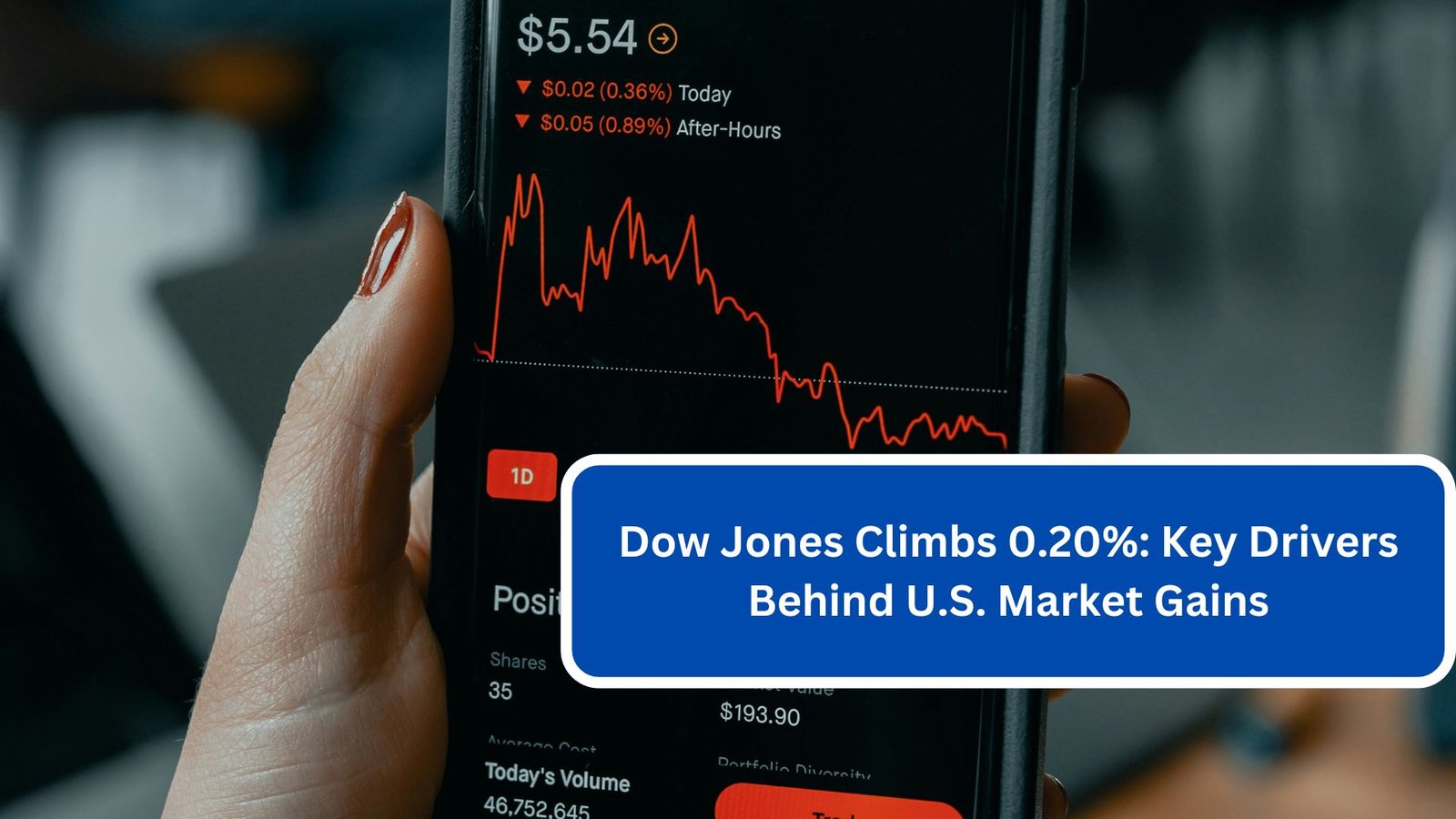On the latest trading day, the Dow Jones Industrial Average (DJIA) experienced a gain of 0.20%, closing at approximately 34,500 points. This modest increase reflects a combination of favorable economic indicators, robust corporate earnings, and an overall positive market sentiment. In this article, we explore the key drivers behind the recent gains in the U.S. stock market and their implications for investors.
1. Positive Corporate Earnings
a. Robust Earnings Reports
A significant factor contributing to the Dow’s rise has been the recent earnings reports from major corporations, which have largely exceeded analysts’ expectations. Key sectors, such as technology and financials, have reported strong results:
- Technology Sector: Leading tech companies like Microsoft and Apple reported impressive earnings, driven by sustained demand for their products and services. Microsoft’s growth in cloud computing and Apple’s robust sales in consumer electronics have been particularly noteworthy.
- Financial Sector: Major banks, including JPMorgan Chase and Bank of America, also posted strong earnings, aided by higher interest rates that improved their lending margins. The overall strength in the financial sector has provided a solid foundation for the market.
b. Positive Guidance
Beyond current earnings, many companies have issued optimistic forward guidance. This forward-looking optimism boosts investor confidence, suggesting that businesses expect continued growth and profitability in the coming quarters.
2. Favorable Economic Indicators
a. Consumer Confidence
Recent reports indicate an increase in consumer confidence, which is a critical driver of economic growth. Higher consumer confidence typically leads to increased spending, benefiting a wide range of industries and supporting corporate earnings.
b. Labor Market Strength
The labor market continues to show resilience, with decreasing unemployment claims and strong job growth. A robust labor market supports consumer spending and provides a positive backdrop for economic growth, further bolstering investor sentiment.
c. Inflation Trends
Recent data suggests that inflation may be stabilizing, alleviating concerns about aggressive interest rate hikes by the Federal Reserve. As inflationary pressures ease, investors are more likely to view equities favorably, contributing to market gains.
3. Supportive Monetary Policy
a. Federal Reserve’s Stance
The Federal Reserve’s monetary policy remains a key factor in driving market gains. Recent statements from Fed officials suggest a cautious approach to interest rate increases, which has been well-received by the markets.
- Low Interest Rates: The Fed’s commitment to keeping interest rates low supports borrowing and investment, fostering an environment conducive to economic growth. This environment allows for higher valuations in equities, which helps support the overall market.
b. Market Stability
The Fed’s efforts to maintain economic stability provide a safety net for investors, encouraging risk-taking in the stock market. A stable monetary environment fosters confidence and investment in equities, contributing to overall market performance.
4. Positive Market Sentiment
a. Geopolitical Stability
While some geopolitical risks remain, recent developments have created a sense of stability that has positively influenced market sentiment. Reduced uncertainty allows investors to feel more comfortable taking risks in the stock market.
b. Technical Indicators
Technical analysis indicates strong support levels for the DJIA, prompting buying activity among traders. The index’s ability to hold above critical support levels has added to bullish sentiment, further driving upward momentum.
5. Sector Rotation
A notable trend in the market is the ongoing sector rotation, where investors are reallocating funds from defensive sectors to growth-oriented sectors such as technology and healthcare. This shift reflects increased investor confidence and a willingness to seek higher returns.
a. Growth Stocks in Focus
The focus on growth stocks, particularly in the technology and healthcare sectors, indicates a shift in investment strategy as investors become more optimistic about the economic recovery. This trend is essential for sustaining market momentum.
Conclusion
The Dow Jones Industrial Average’s 0.20% increase is a reflection of a confluence of factors, including strong corporate earnings, favorable economic indicators, supportive monetary policy, and positive market sentiment. These elements collectively create a robust environment for the stock market, fostering optimism among investors.
As the economy continues to evolve, it is essential for investors to remain vigilant about potential risks, including inflationary pressures and geopolitical uncertainties. By staying informed and strategically positioned, investors can navigate the complexities of the stock market and capitalize on emerging opportunities as they arise.

